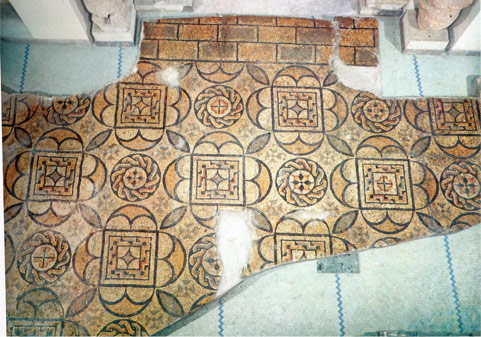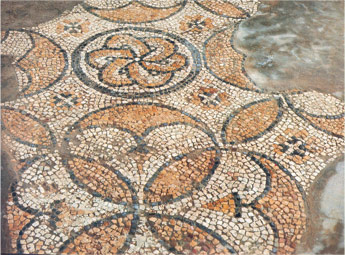Mosaic
This mosaic (fig. 1) was not found on the Baths, but a short distance away, during works carried out in the courtyard of a private home. Since the old dig reports state that the building did have mosaics, of which no trace remains, this is an example of how the floors of those Baths must have been decorated between the II and III century A.D.
The mosaic carpet shows squares, with shields on sides (that is circle arch decorative motifs), alternated by braid circles. You can see Malta cross motifs in the remaining spaces. There are other ornamental motifs inside the squares and circles, geometric in the squares, portraying leaves in the circles. All framed by a border of rectangles.
There are few dominating colours in the mosaic: ochre, grey, black, with very few white and green tiles. Some other important mosaic examples with the same colour scheme played mainly on the colours of the earth were found in Sardinia: of the same period as the Fordongianus one, examples found in the so-called “Palace of the Barbarian King” in Porto Torres and the so-called “Nymphaeum” in Nora (figs. 2-4).
Bibliografia
- S. ANGIOLILLO, Mosaici antichi in Italia. Sardinia, Roma 1981, n. 135.
- S. ANGIOLILLO, L’arte della Sardegna romana, Milano 1987.





 VR
VR